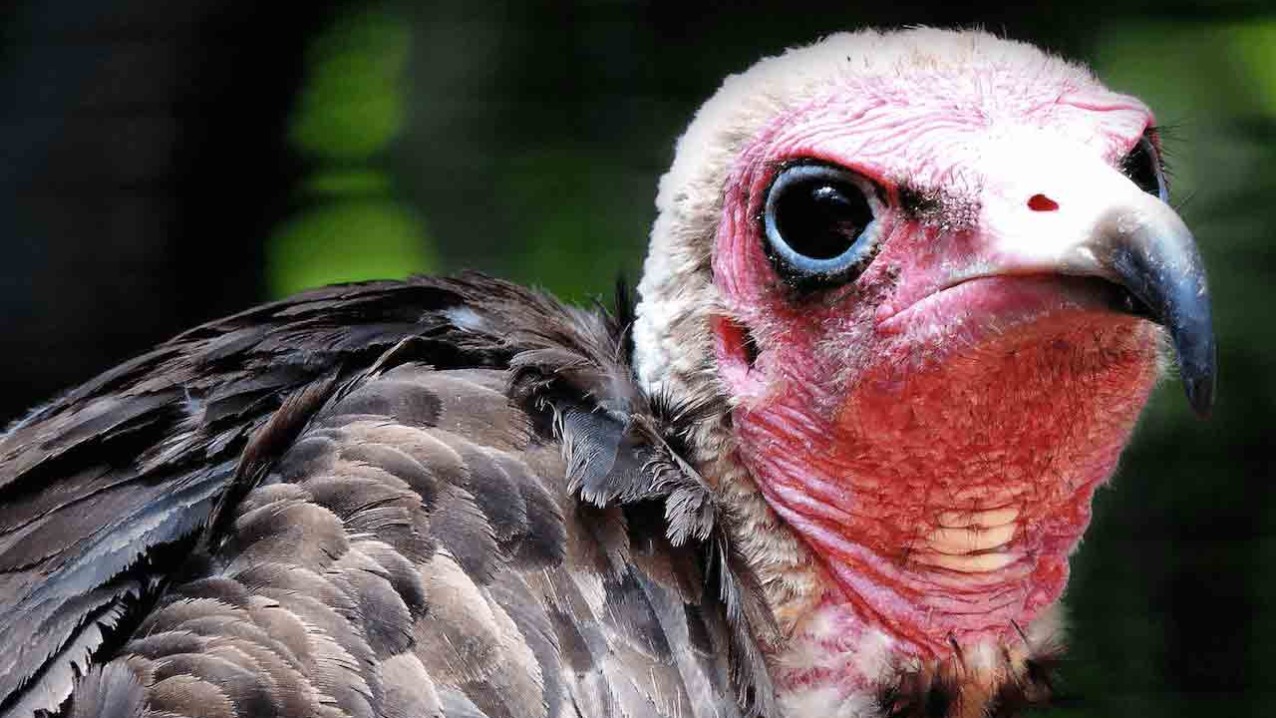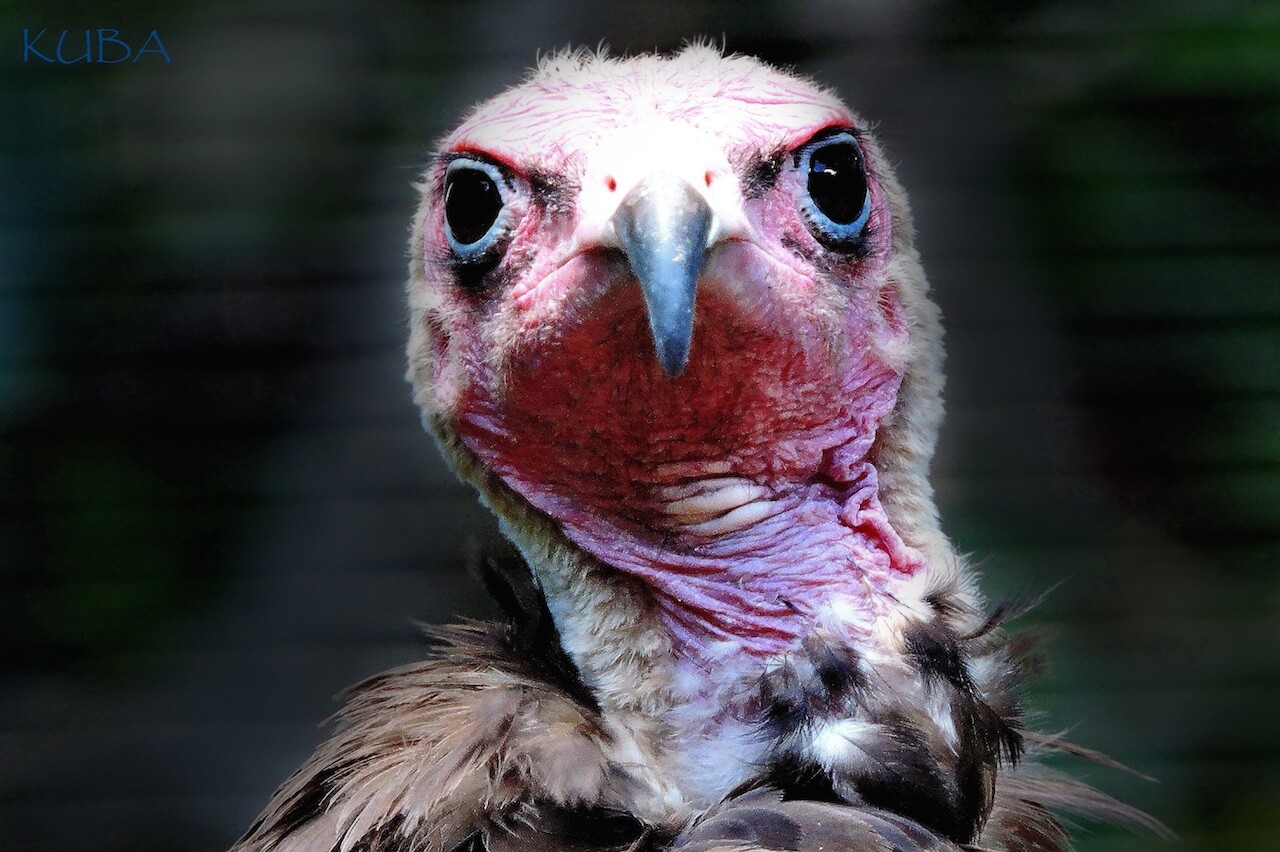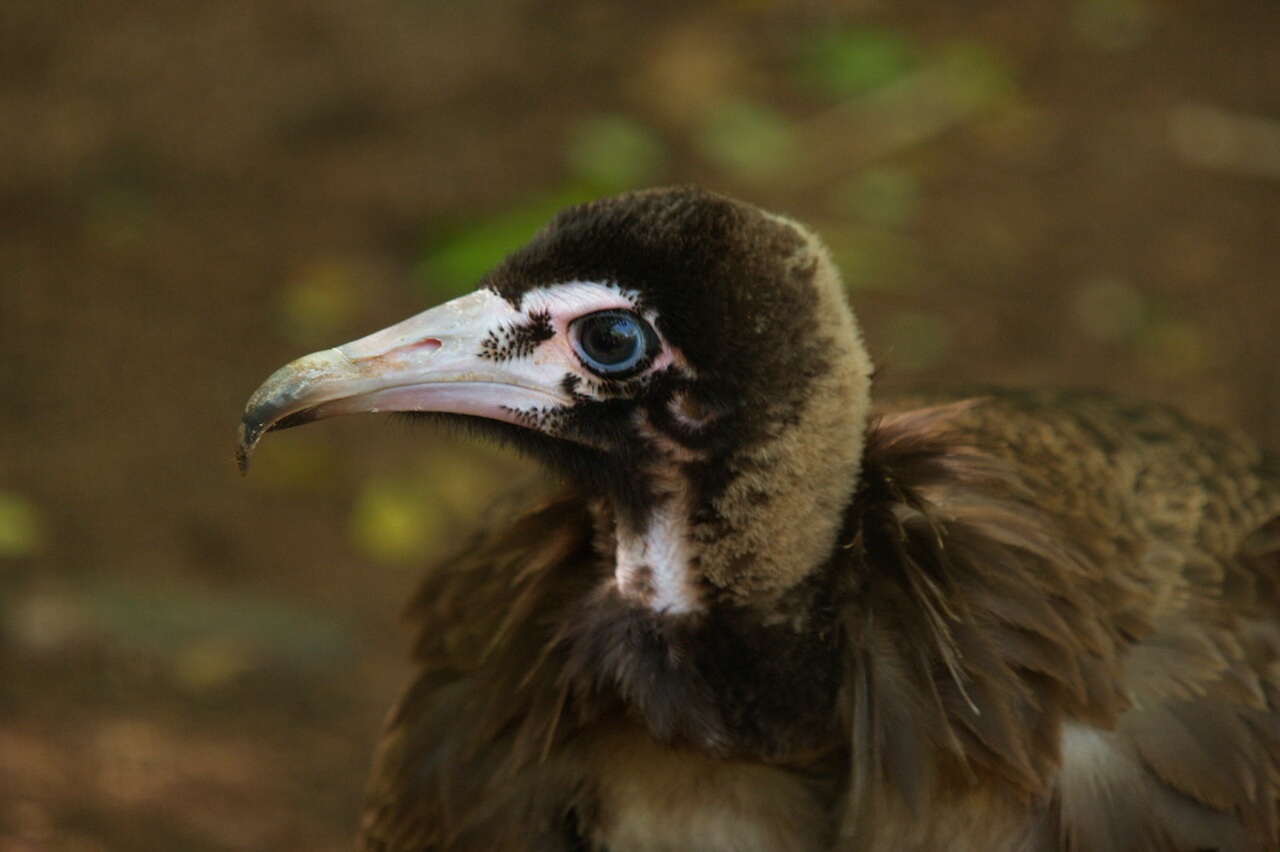necrosyrtes monachus
Hooded Vulture
About Me
Scientific Name: Necrosyrtes monachus
Description
Hooded Vultures are small vultures about 26 inches long. Females are larger than males. They are dark brown, have rather short, rounded tails and thin, weak beaks. The bare skin on their faces is reddish pink but may become bluish when the birds are excited. They have weak feet that are adapted for walking and running, not for clutching branches.
Fun Facts
- All vultures, in spite of their apparently “unappetizing” manner of feeding, are quite clean birds and bathe frequently.
- Vultures detect dead animals by sight and by the movements of other vultures and carrion eating birds. They sometimes gorge so heavily that they can scarcely fly.
- Kingdom: Animalia
- Phylum: Chordata
- Class: Aves
- Order: Accipitriformes
Hooded Vultures are small vultures about 26 inches long. Females are larger than males. They are dark brown, have rather short, rounded tails and thin, weak beaks. The bare skin on their faces is reddish pink but may become bluish when the birds are excited.
They have weak feet that are adapted for walking and running, not for clutching branches. Their wings are long and the birds can soar for long periods.
Old world vultures (from Africa, Asia and Europe) are not closely related to North and South American Vultures.
Hooded Vultures are scavengers that consume food from a variety of sources; they are opportunistic feeders. Decaying flesh (carrion) from animal carcasses is a principal source. Because of its relatively small size and weak bill it generally waits its turn at a carcass to pick up minor scraps left behind by other vultures. In towns or cities they search for food in refuse dumps and gutters. On seashores they feed at low tide on mussels, spiny lobsters, mollusks, dead fish and other stranded edibles. They also eat grasshoppers, grubs and locusts.
Vultures cannot expect to eat every day, as carcasses may not be available. So their crops and gizzards can be distended to hold enough food to last for several days. Even young vultures survive well without daily feedings.
They range widely in Africa south of the Sahara Desert. It is most numerous in West Africa. It is the only vulture that is commonly found around towns and villages and in forests. scavenger and is Their habitats include open plains, savannas, forests, coastal areas and villages. From a distance the hooded vulture may be mistaken for the Lappet-faced vulture in color, but is only half the Lappet’s size.
Only hooded vultures are common in forested regions, but not found in every suitable locality. They depend on the presence of places like slaughterhouses, open markets, etc. and are less reliant on carrion like other vultures. Even though they are sometimes found in large numbers, they tend to be solitary birds.
All vultures, in spite of their apparently “unappetizing” manner of feeding, are quite clean birds and bathe frequently. It is a very valuable bird to have in clearing up all sorts of refuse, that if left unchecked, could cause illness and disease.
Vultures detect dead animals by sight and by the movements of other vultures and carrion eating birds. They sometimes gorge so heavily that they can scarcely fly.
Hooded vultures are silent birds and mated pairs are devoted to each other, roosting together outside the breeding season. They will usually roost close to their preferred breeding site. In areas where there is little human activity, the population will be sparse; however it is very numerous in the savannahs of Central and West Africa.
In the wild, turkeys build their nests in well hidden places on the ground. The hen prepares a hollow in the loose earth or duff of the forest floor, lining it with leaves, grasses, or other plant materials. Only the hen incubates. She covers the eggs carefully with leaves before leaving the nest to look for food.
These vultures breed all year round. Mating takes place in trees, usually near the nest. The nest will be at any height from 20 to 120 feet above ground. Their favorite nesting trees are silk cotton and baobabs if there are any in the vicinity. They normally nest in trees and construct huge stick nests lined with green leaves that will be used year after year.
The female lays one egg that has reddish spots on a whitish base and the incubation of 46 days, is mainly by the female. The male will provide the female food while she is sitting on the egg. The young chick is helpless and must be watched carefully by the parents and until the chick is 21 days old the male will provide food for both the female and chick. Feeding by both parents then becomes a rigorous ordeal, especially as its first flight will not be until the young is 120 days old and easily as large as the parents. The fledgling vulture will still require some parental care until it becomes independent about one month after its first flight.
Other Birds
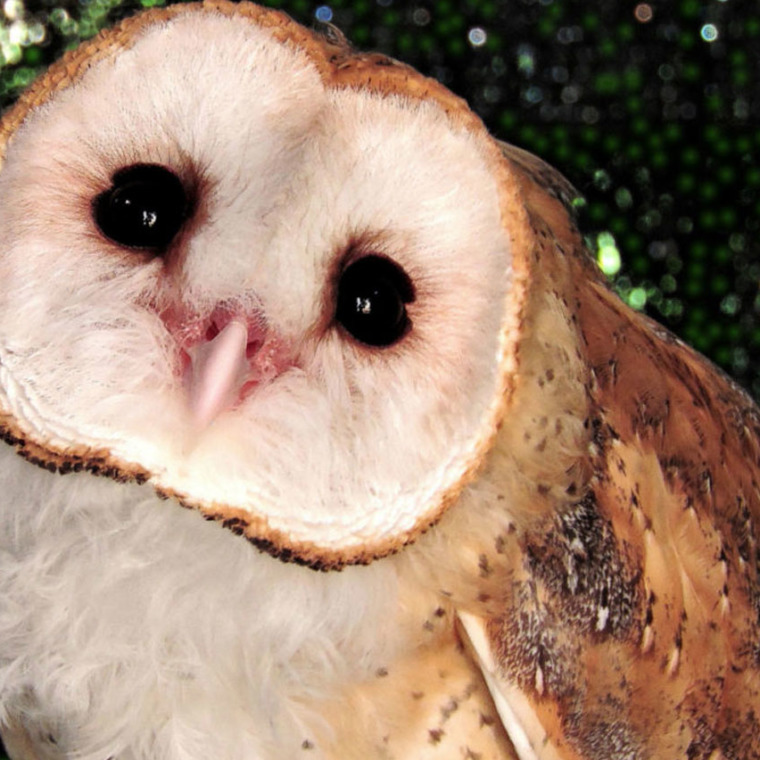
Barn Owls are found throughout the globe, in Europe, Africa, Asia, Austrailia, and the Americas
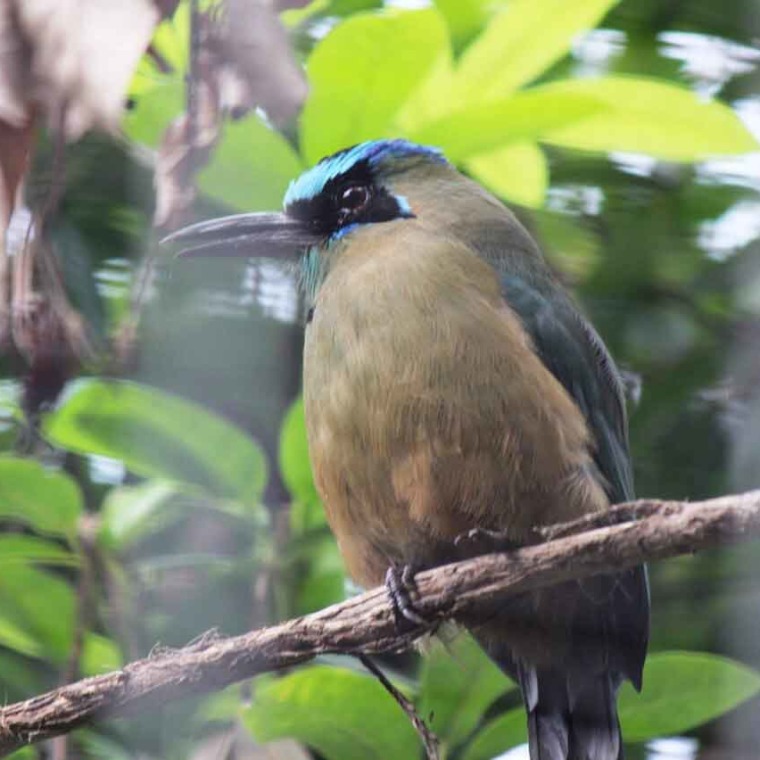
This animal can grow over a foot in length! Motmots possess a serrated beak and red eyes, with a black mask that encircles their heads.
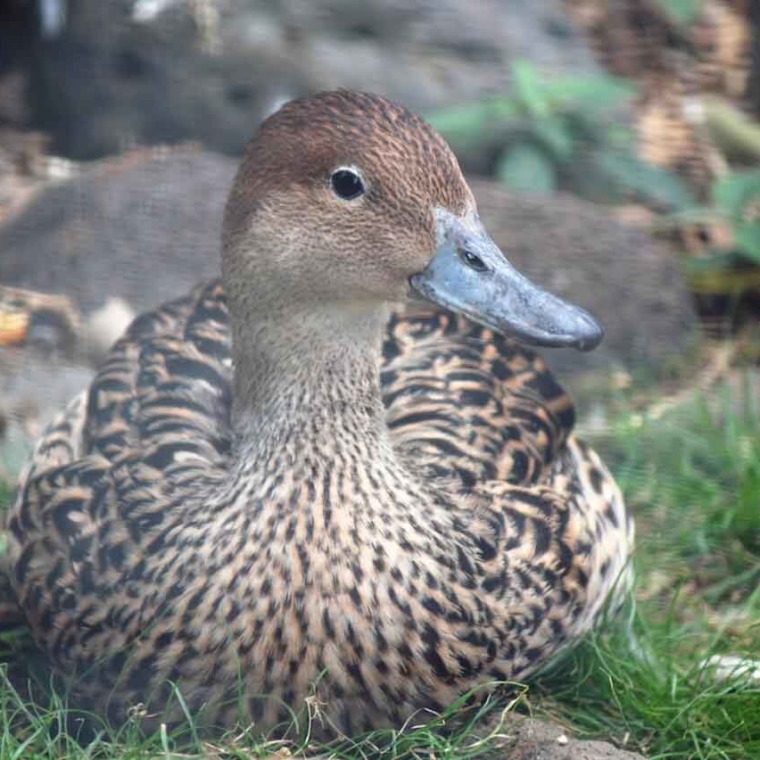
Koloa maoli are very secretive and difficult to observe except in protected areas such as Hanalei National Wildlife Refuge on Kauai.
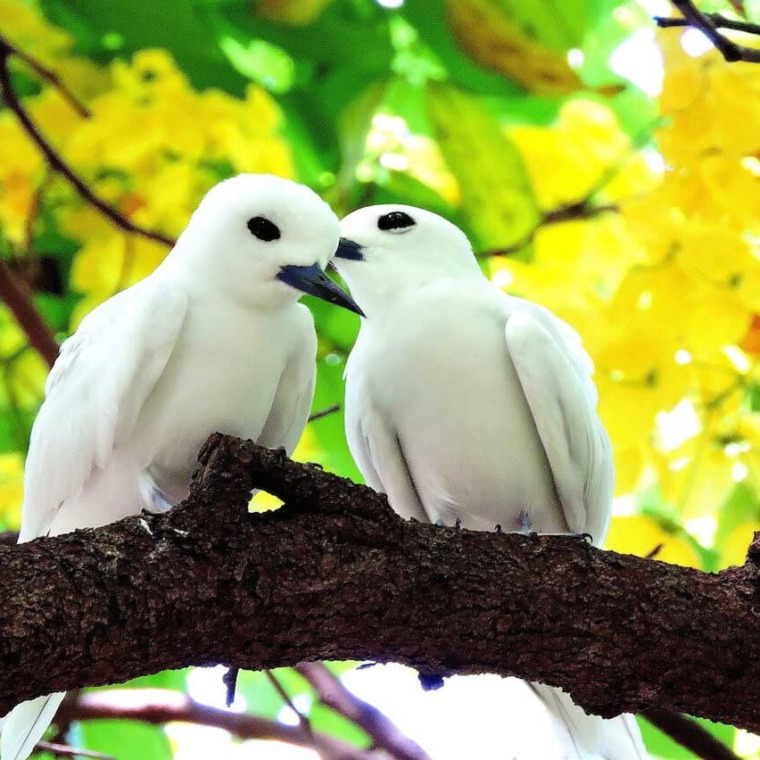
This bird is found primarily on islands, and has a wide ranger across the equatorial band of every ocean on Earth, save for the Arctic Ocean, which does not cross the equator.
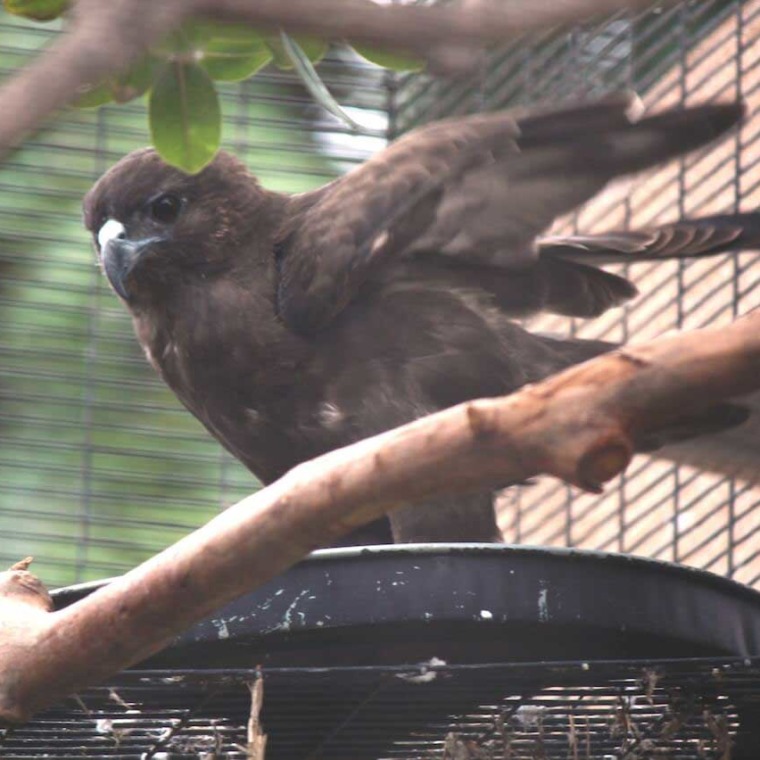
’Io prefer to hunt from tall perches that they use to survey their prey; however, they are known to dive at targets from mid-flight if the opportunity presents itself. are territorial and come together only to breed.


